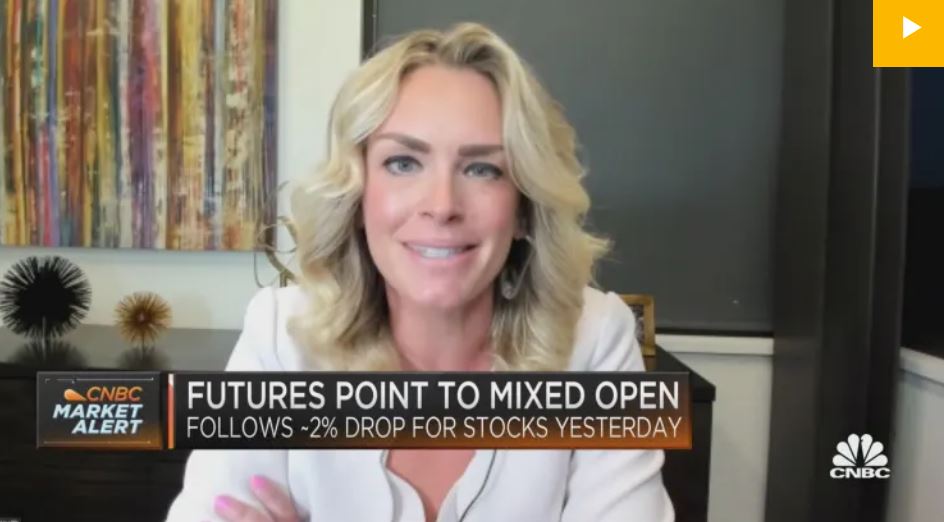“Keeping at it” remains the message from the Fed as they continue to fight inflation. We’re keeping at it too by investing in quality assets, taking advantage of rebalancing opportunities, and implementing tax-saving strategies, as appropriate. It’s been a bumpy year so far, and we expect volatility to continue, but not forever. We see a light at the end of the tunnel and believe the market will rebound to set new highs.
On September 21st, the Fed announced another consecutive 75 basis point (0.75%) rate hike, making the key message, “don’t fight the Fed”. The Fed plans to tackle inflation with continued aggressive rate hikes, with a projected rate peak of 4.6% in 2023, implying roughly 150 basis points in additional hikes.
Despite key economic data being released this week, we don’t anticipate the Fed will pivot from their clear path forward, barring a major global headline (think Russia/Ukraine). It will be important to watch reports on employment (Fed wants it down), initial jobless claims (Fed wants them up), wages (Fed wants them down), consumer spending (Fed wants it down), and housing prices (Fed wants them down).
Fortunately, bear markets don’t last forever. We think we are about three-fourths of the way through this one and episodic volatility will continue for the foreseeable future.
Expectations point to the Fed easing on rate hikes in Q2 of 2023, giving way for the market to rally and reach new highs likely in late 2023 or 2024. So, what happens until then? From a technical perspective, the next support zone for the S&P 500 is 3,500 to 3,200, meaning we may drop another 10%.
We get that projected bottom by taking the lowest earnings forecast for the S&P 500 for 2023 ($200) and applying a 16-times multiple (200 x 16 = 3,200). Why a 16-times multiple? Because the last time the 10-year Treasury traded at 4% was in 2010, and the market had a multiple of 16. This is important because both technical and fundamental analyses give us the same range for the market. We know that projection is difficult to stomach, but we believe we are still in a secular bull market and can reach all-time market highs in late 2023 or 2024.
While the emotional toll of this market may feel similar to the financial crisis of 2008, we are in a different environment with the credit market. It’s very important to note that up against this backdrop, we have a strong banking system, and the credit markets are functioning well, unlike the recent issues in the United Kingdom.
We are in a unique time in that both the equity and bond markets are in bear territory (first time since 1982), yet unemployment remains low, which is good news. Based on projections from the Fed Governors, we’re likely to see the unemployment rate rise from 4.6% to 5%. We believe starting from a point of strength in the labor market will provide the support necessary to avoid a prolonged recession.
So how do we position portfolios in light of all of this? We remain focused on investing in high quality companies and asset classes. We strategically underweighted international allocations which should help portfolios avoid the much more difficult investing environment abroad. Rising rates mean we’re revisiting fixed income, where appropriate.
Down markets also present opportunities to tax-loss harvest, strategically rebalance, and convert IRAs to Roth IRAs at a discount: all of which are strategies we employ when applicable. We consider this to be a silver lining in an otherwise difficult market.
The takeaway here is to be patient and stay the course. Riding out a bear market is never fun, but we don’t anticipate this being a prolonged downtrend.
If you have any questions or would like to discuss your portfolio in more detail, please contact our office.





